[ad_1]
In Rizhao, China, Junya.ishigami + associates recently completed the Zaishui Art Museum—a building that, from a bird’s eye view, appears to be floating on water. The 170,000-square-foot art museum is made of steel reinforced concrete. It’s sited on an artificial, 6-foot-deep lake in the Shandong Province.
The award-winning Tokyo office designed the building between winter 2016 and summer 2019. Shovels broke water that August, culminating in the art museum’s opening last December. The building anchors a new planned development in Rizhao, a city about 200 miles south of Beijing on the Yellow Sea.
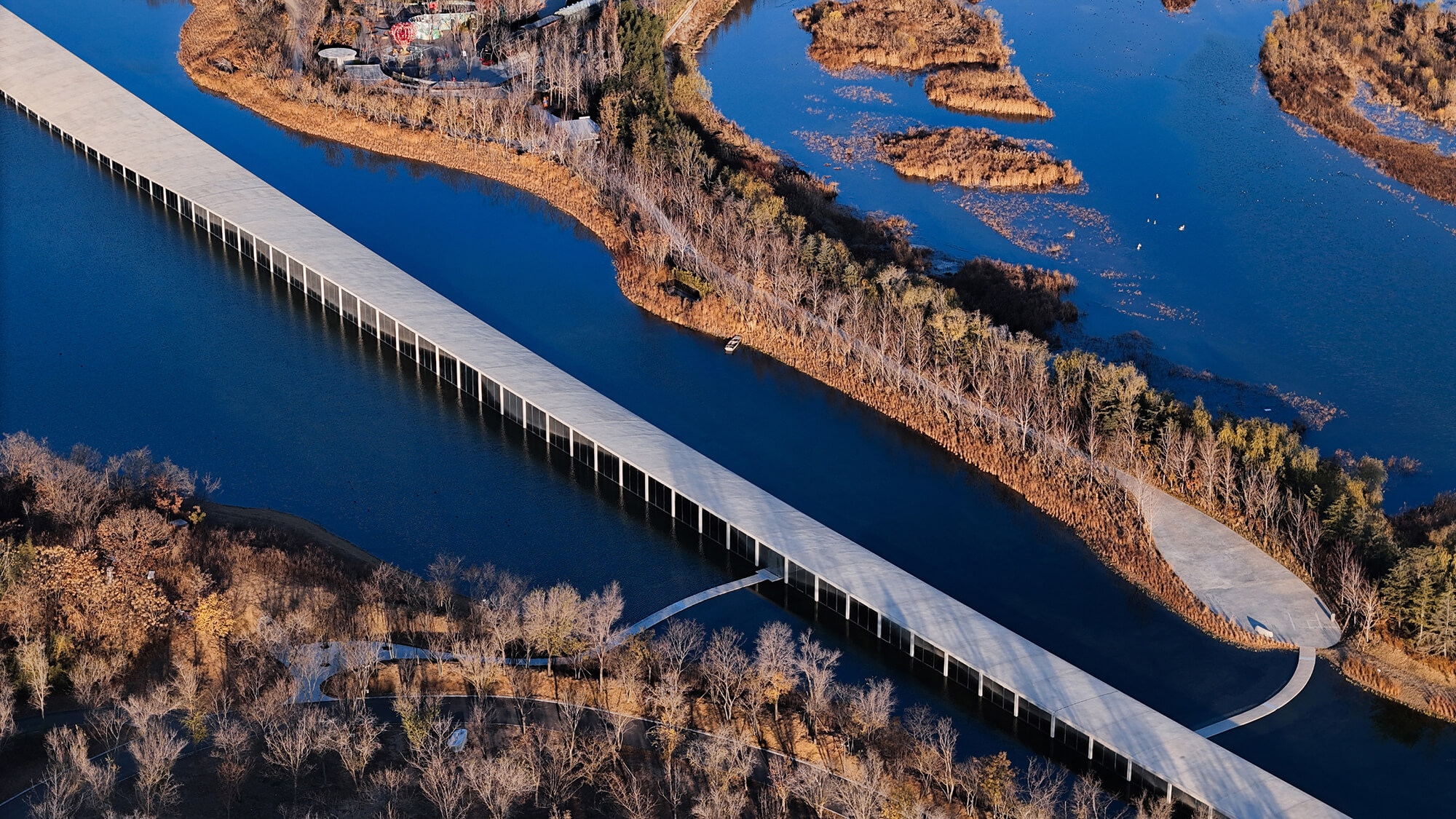
In his artistic statement, Junya Ishigami called the building a “a gentle giant” because of the way it sits in the landscape, surrounded by water and mountain ranges. “When contemplating architecture in China, that country’s vast, boundless landscapes can pose a daunting challenge,” Ishigami said. “So the question is, how to treat environment and architecture as equals in the Chinese context? How to bring environment and architecture as close as possible to each other, how to make the boundary between them as ambiguous as possible, how to make nature the gentlest presence possible for us humans? Such are the themes for this project.”
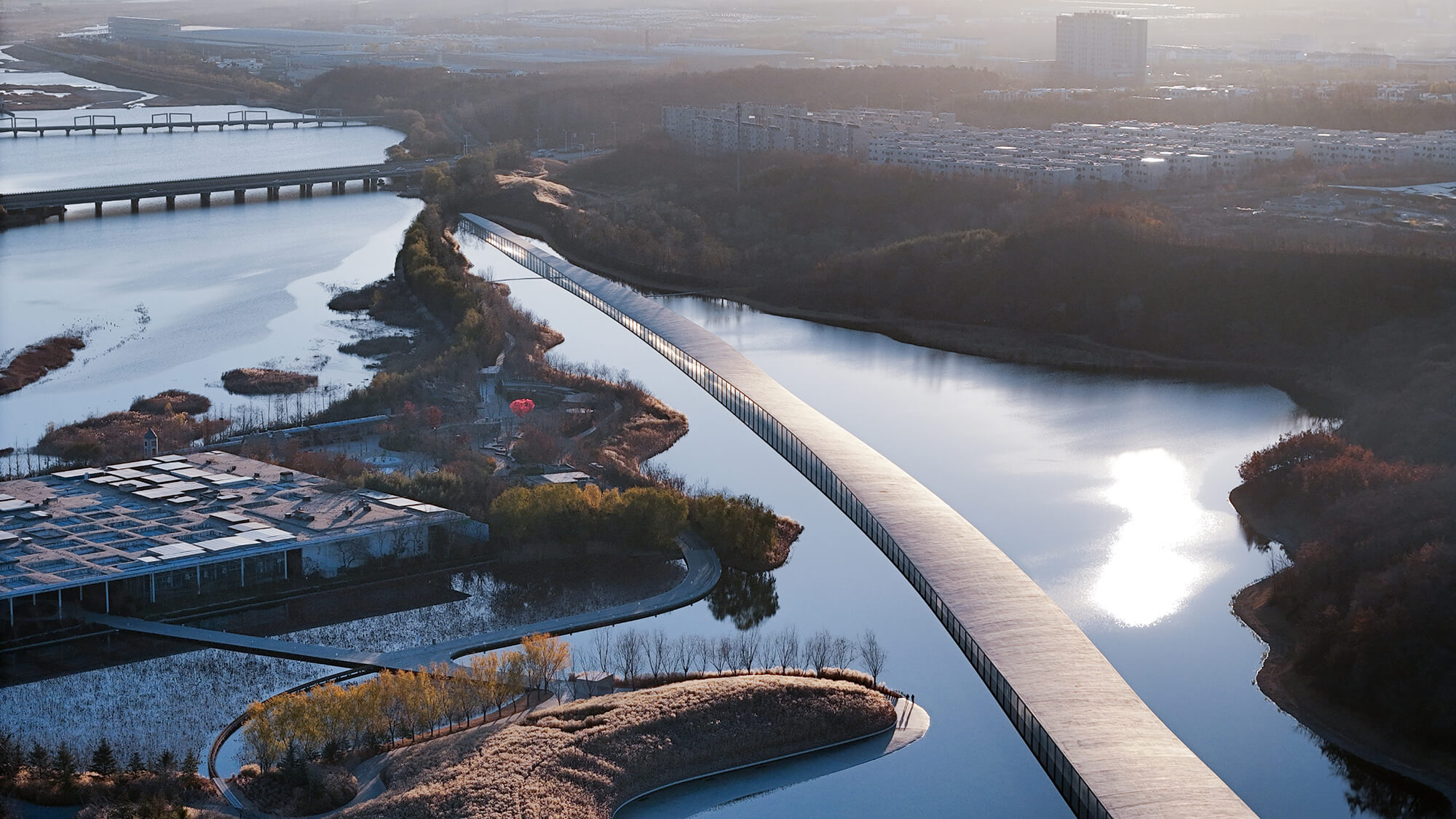
Zaishui Art Museum is very long and very thin: It’s one kilometer in length from end-to-end. In elevation, half of it perches above the water’s surface, like an iceberg, while the other half is below. The institution proffers exhibition space for artists, a visitors center, and a shopping hub. The oblong shape sways back and forth in plan: At some points it’s 15 feet wide, at others 65 feet. The ceiling heights range from 4 feet to 16 feet.
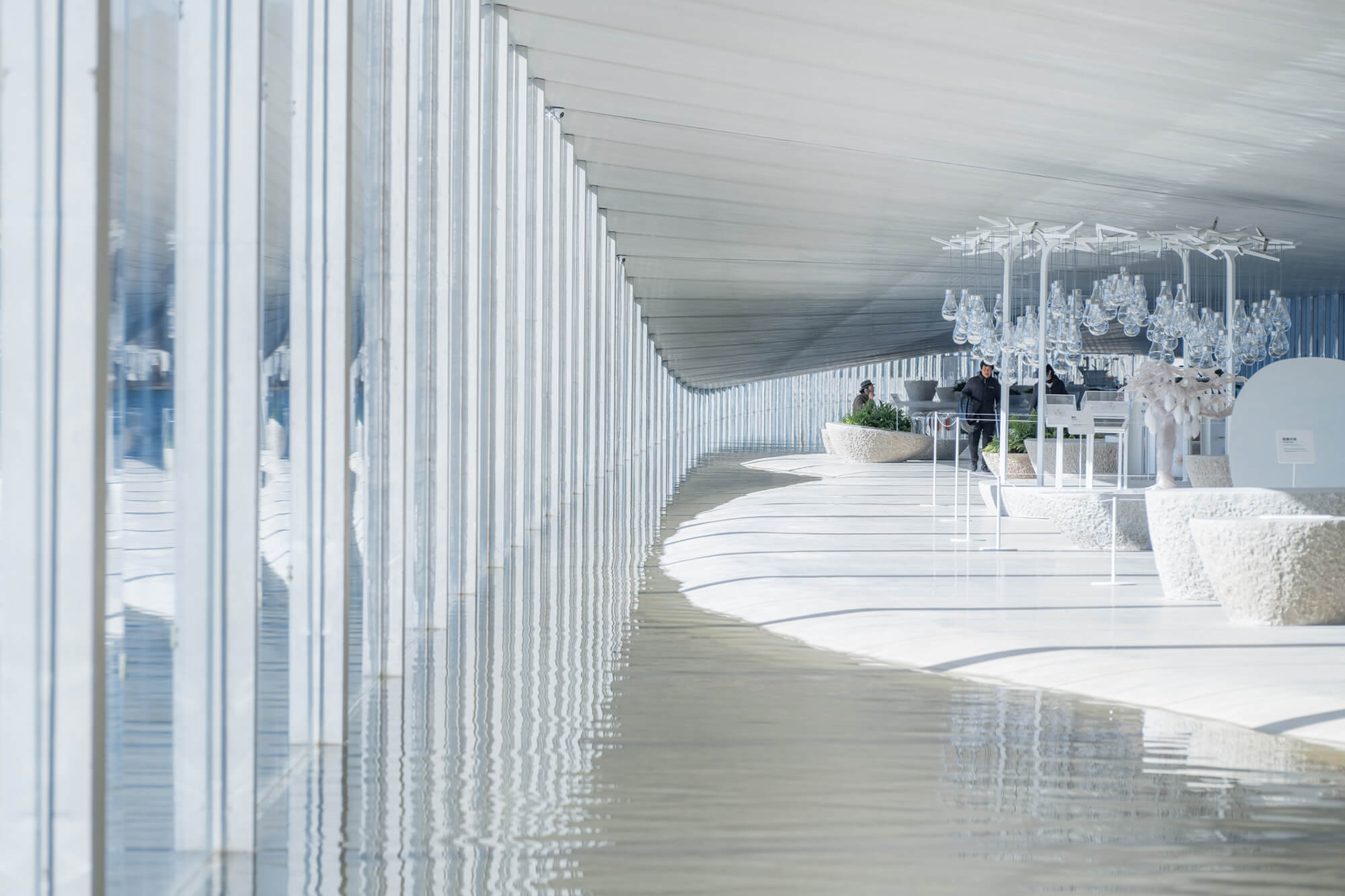
The architects note that they were inspired by Venice, Italy’s canals and the historic water towns of China such as Wuzhen, an ancient settlement on the Yangtze River. In both cities, waterways double as commercial corridors for markets.
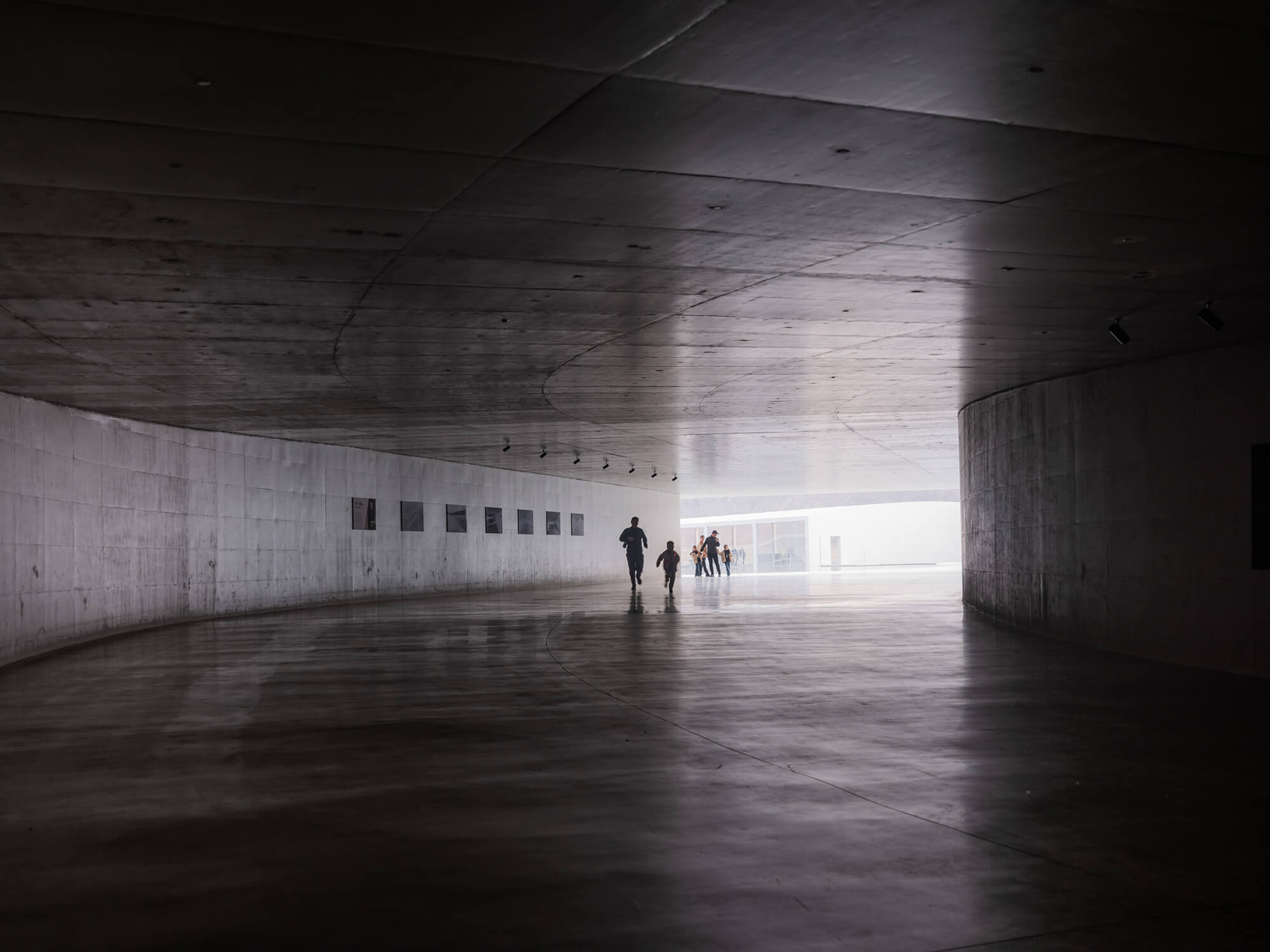
Inside, Junya.ishigami + associates chose to lacquer the floors and ceilings with polished concrete. When the water reflects on these surfaces, it evokes the sense of walking on water; a mystical experience. And at certain points throughout the meandering space, the floor slab dips, and water pools, creating another stunning optical illusion.
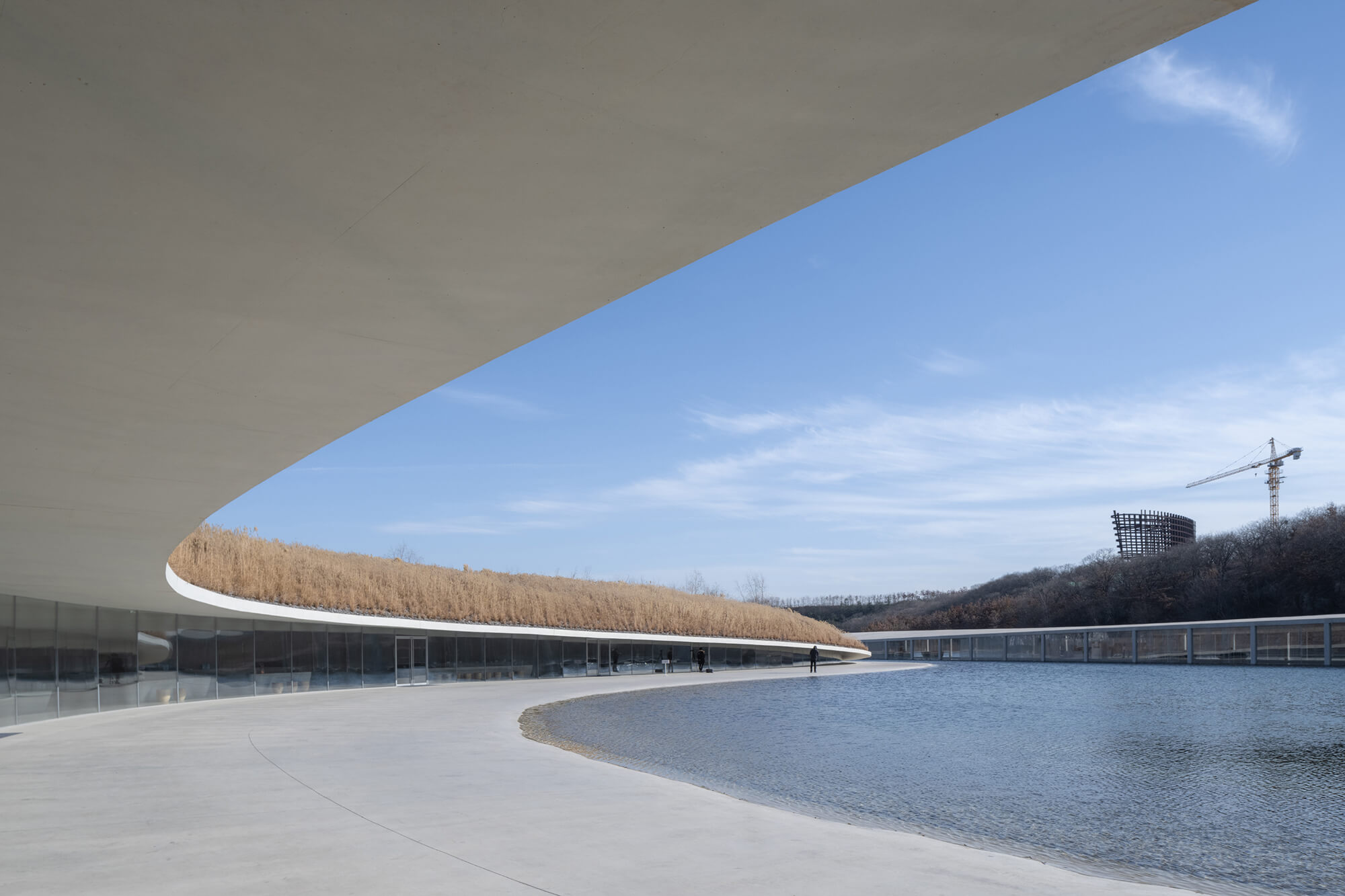
In section, the floor-to-ceiling heights fluctuate throughout the visitor’s journey. The architects said that this allows in plentiful light in some areas. Then, where the ceilings are low, spaces with less light can accommodate different types of art that demand more darkness, or simply space for contemplation.
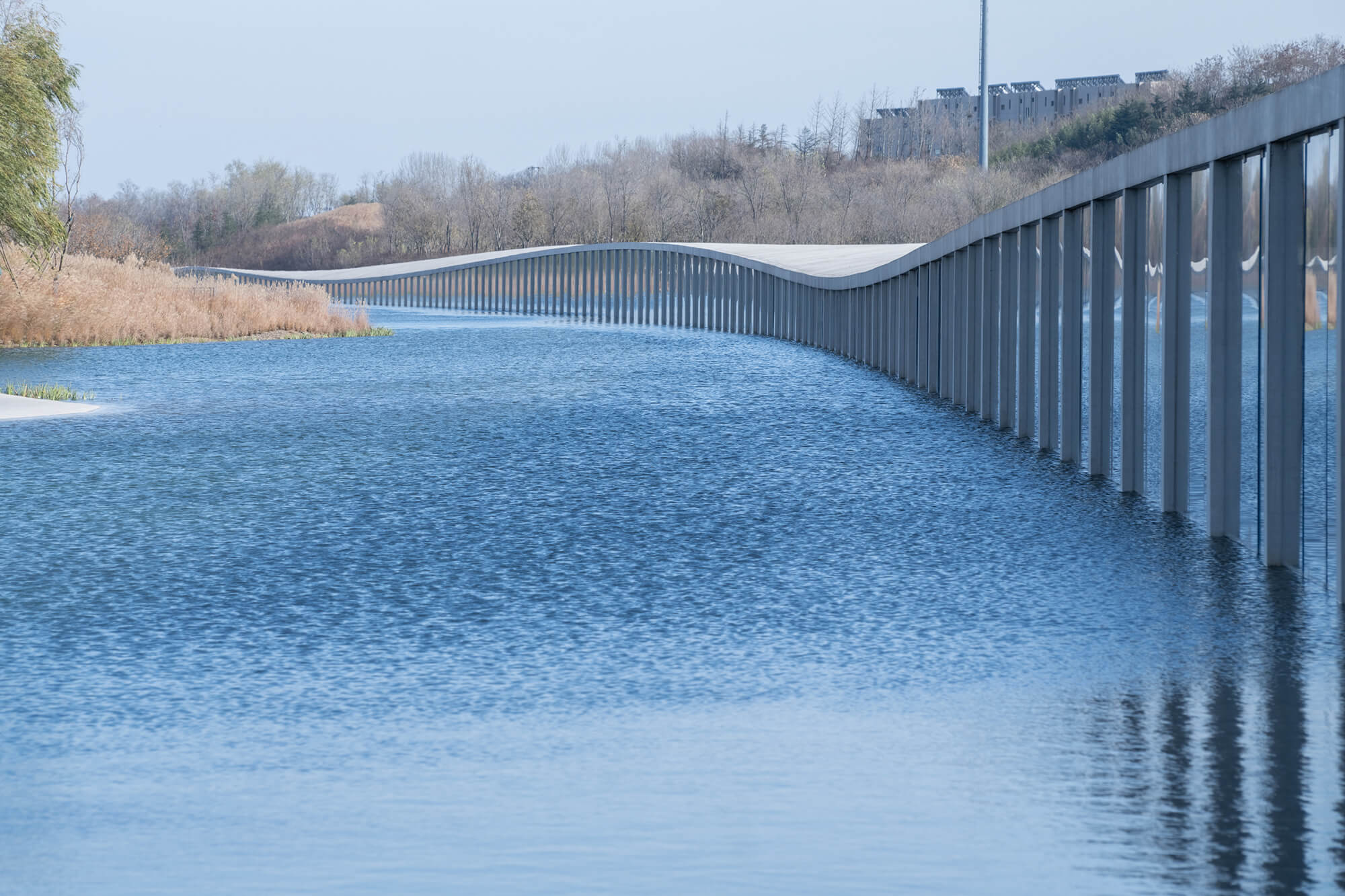
The building’s voluptuous roof slab made of concrete is supported by 300 columns. The spacing between spandrels and columns pushes and pulls throughout. At some points of the elevation, the structural members are just a few feet apart. At others, the roof slab spans long distances between thicker concrete supports. This creates an oscillating, rhythmic, and playful affect.
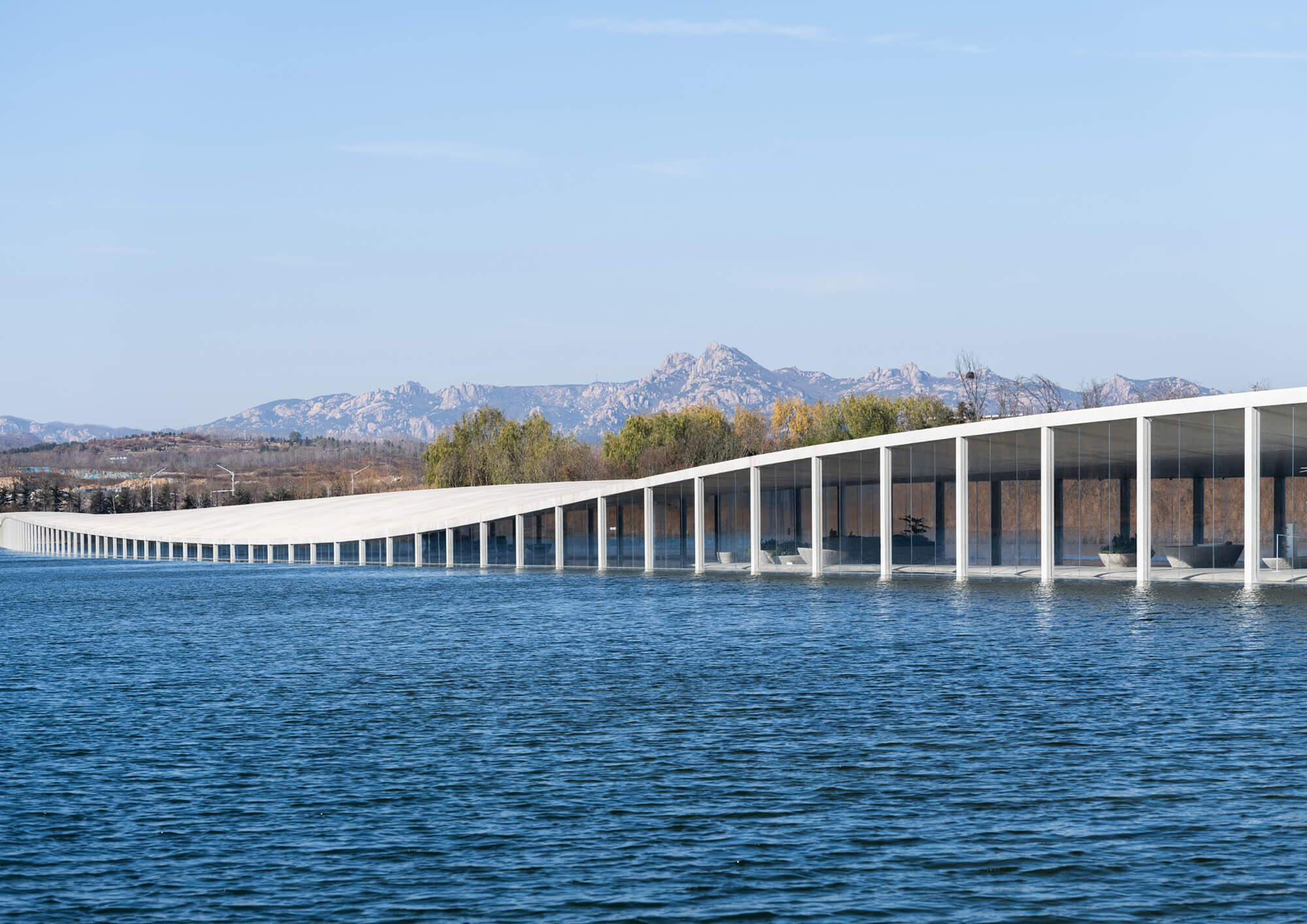
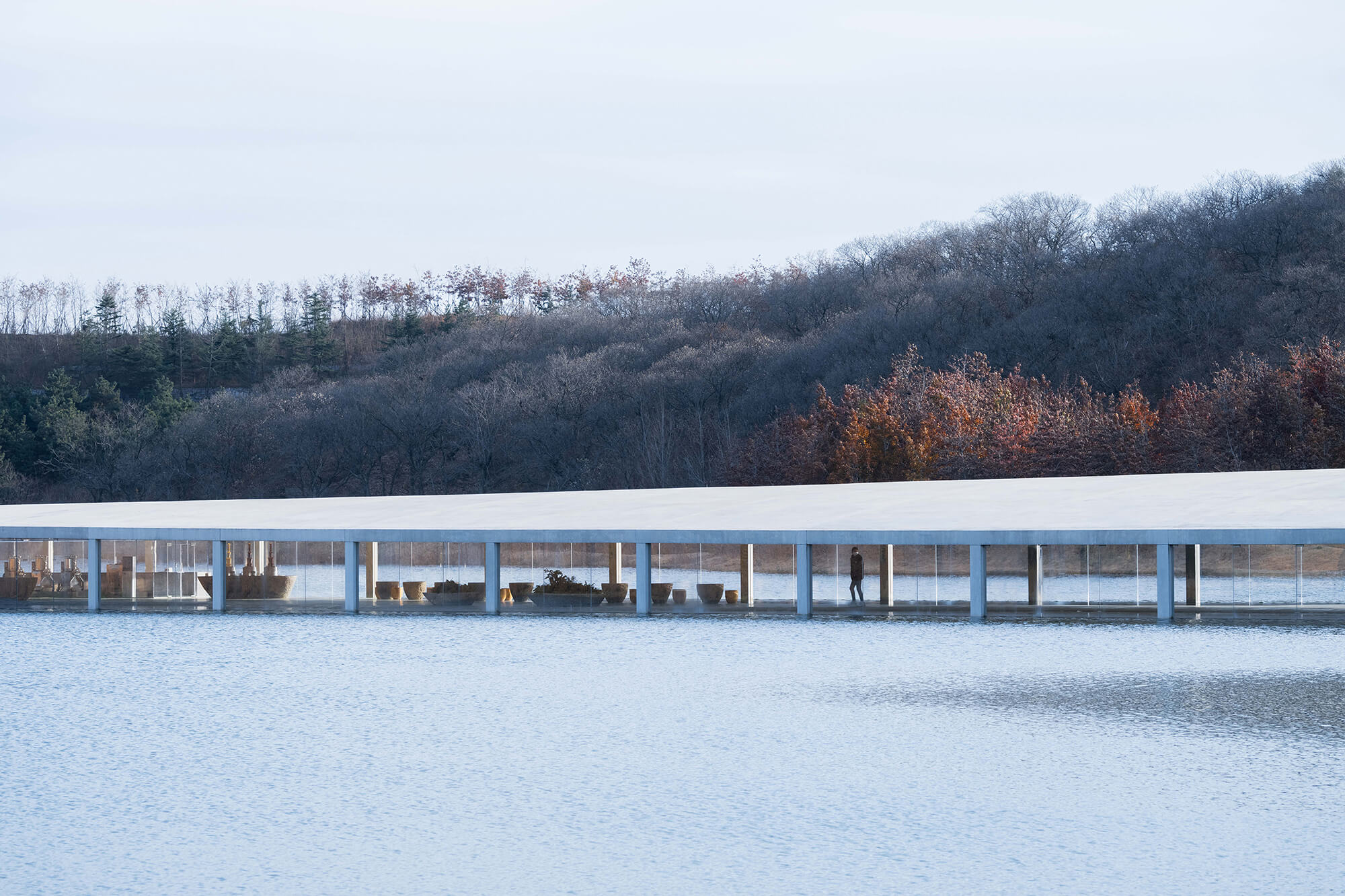
As the new planned development in Rizhao grows, two new cultural institutions—Forest Kindergarten and Church Of The Valley—will be built in proximity to the Zaishui Art Museum, commissioned by the same client.
Translation services were offered by Pamela Miki Associates.
[ad_2]
Source link










